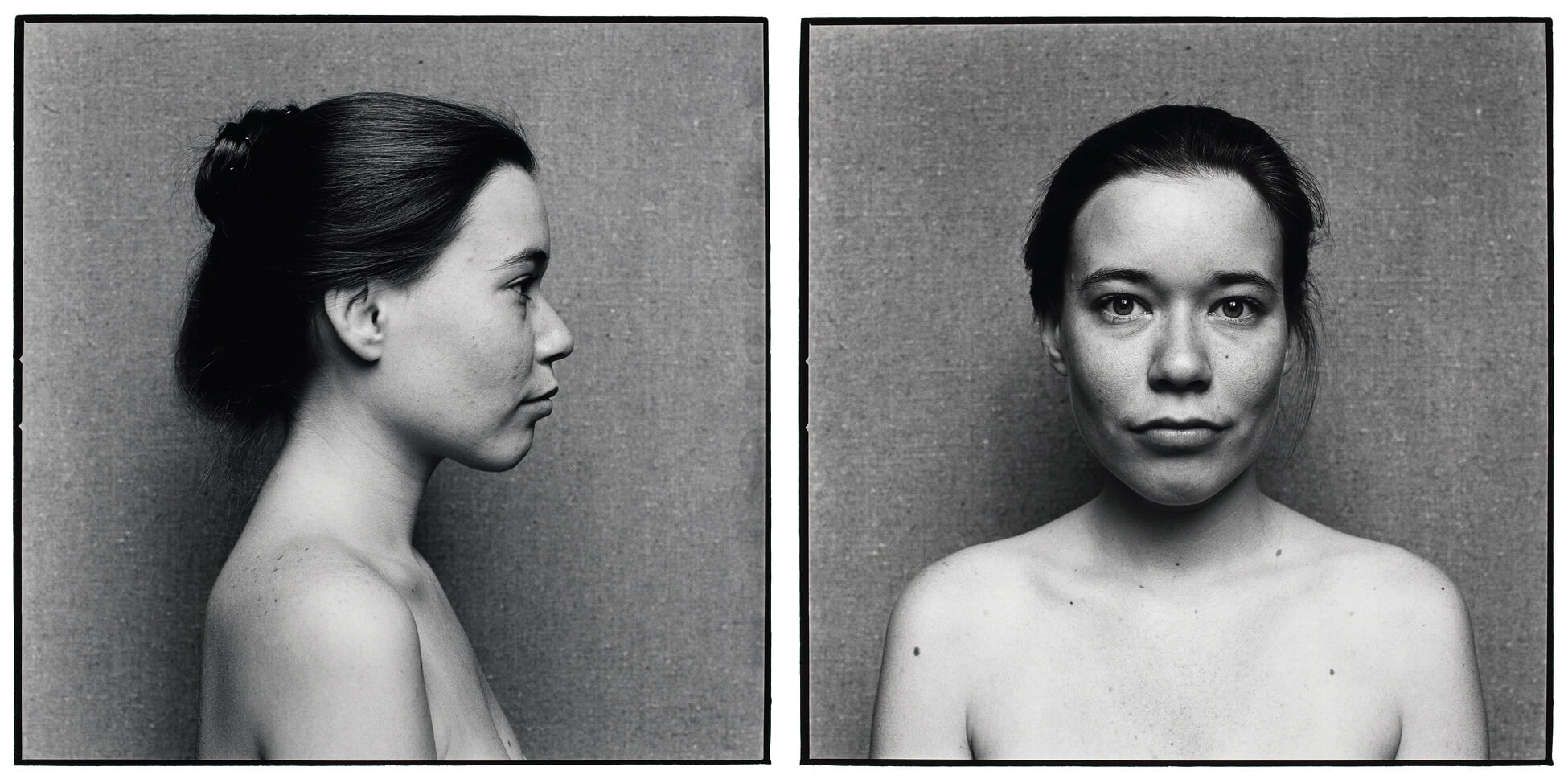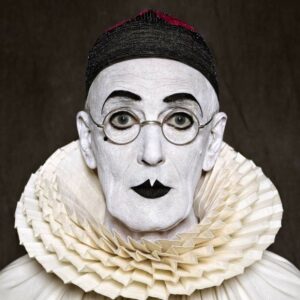64 Portrait Studies 1976–78

Arnaud Maggs, 64 Portrait Studies (details), 1976–78
64 gelatin silver prints, 40.4 x 40.4 cm each; image: 37.9 x 38.2 cm each
National Gallery of Canada, Ottawa
Against a textured background, Arnaud Maggs photographed sixteen female and sixteen male sitters. Comprising four rows of equally sized black and white portraits, 64 Portrait Studies presents the viewer with neutral images of the thirty-two sitters with their bare shoulders exposed. Starting with the details seen here, the portraits of his female subjects constitute the first and second rows of 64 Portrait Studies, alternating between profiles and frontal views. The portraits of his male subjects follow suit in the third and fourth rows. No single sitter takes priority.
Maggs thought of 64 Portrait Studies as his “first serious” artwork. It was initially shown in 1978 at David Mirvish Gallery in Toronto in his first significant solo art exhibition. Revealing a taxonomic approach that was inspired by variations in human physiognomy, the work marks the start of Maggs’s large-scale, grid-based portrait explorations.
-
Arnaud Maggs, 64 Portrait Studies (detail), 1976–78
Gelatin silver print, 40.4 x 40.4 cm; image: 37.9 x 38.2 cm
National Gallery of Canada, Ottawa -
Arnaud Maggs, 64 Portrait Studies (detail), 1976–78
Gelatin silver print, 40.4 x 40.4 cm; image: 37.9 x 38.2 cm
National Gallery of Canada, Ottawa -
Arnaud Maggs, 64 Portrait Studies (detail), 1976–78
Gelatin silver print, 40.4 x 40.4 cm; image: 37.9 x 38.2 cm
National Gallery of Canada, Ottawa -
Arnaud Maggs, 64 Portrait Studies (detail), 1976–78
Gelatin silver print, 40.4 x 40.4 cm; image: 37.9 x 38.2 cm
National Gallery of Canada, Ottawa -
Arnaud Maggs, 64 Portrait Studies, 1976–78
Gelatin silver prints, 40.4 x 40.4 cm each; image: 37.9 x 38.2 cm each
National Gallery of Canada, Ottawa
Installed at David Mirvish Gallery, Toronto, 1978, photographer unknown
The alternating arrangement of profiles and frontal views in each of the rows exhibits the beginnings of a systems-based approach to artmaking. 64 Portrait Studies, however, was made before Maggs developed a method for his work that was defined in part by the number of exposures on a roll of film. Instead, his final selection of images for 64 Portrait Studies was made from a staggering 2,400 possible frames. His goal was to achieve a consistent look across all images and to bring together individual portraits that worked effectively as a unit. “Some people didn’t work at all,” he explained. “Some people I’d have come back for another sitting.” Maggs elected to include only emotionally neutral images, and his ongoing interest in scrutinizing the proportions of the human head informed his selections.
Unconcerned with exposing his sitters’ personalities, Maggs instead established an analytical methodology for 64 Portrait Studies aimed at drawing attention to shape. “More than anything,” he explained, “I wanted people to compare all the wonderful and varied head shapes.” The work is a photographic extension of an early preoccupation with the shape and form of the human head explored in his drawings and illustrations in the early part of his career. It also seemed to inform his approach in several of his editorial photography assignments.
As an installation, 64 Portrait Studies, like much of Maggs’s output, is characterized by its grid-based hanging scheme and its monumental scale. The final dimensions of the artwork were shaped by the space at David Mirvish Gallery. It had “only one unbroken expanse of wall, 28 feet long,” he wrote in his notebook. “I decided to use the one wall only, and that is how the number of pictures, 64, was determined.” Maggs’s first exhibition reveals his awareness of the mutual impact between the artwork and the space.
Maggs would expand his photographic observations of human physiognomy in several works following 64 Portrait Studies, including Kunstakademie, 1980, which features students of the Staatliche Kunstakademie in Düsseldorf.

 About the Author
About the Author
 More Online Art Books
More Online Art Books
 Acknowledgements
Acknowledgements